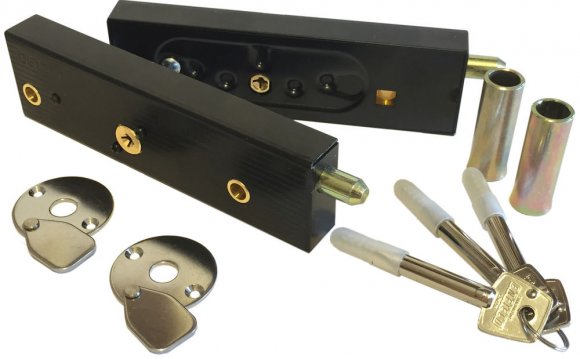
Door with two hair, one out of the doorknob and a separate deadbolt.
A-dead bolt, deadbolt or dead lock is a locking mechanism specific from a springtime bolt lock because a deadbolt can't be moved to the open place except by rotating the lock cylinder using the secret. The more typical springtime bolt lock makes use of a spring to put up the bolt positioned, permitting retraction by applying force into the bolt itself. A deadbolt can consequently make a door much more resistant to entry without the correct key.
A deadbolt is oftentimes accustomed complement a spring-bolt lock on a doors to a building.
Common types[edit]
A deadlock, if it's cylinder managed, is either single-cylinder or double cylinder. a single cylinder deadlock will accept a vital using one side of the lock, it is managed by a-twist knob on the other hand. Double-cylinder hair need a vital on both edges and for that reason do not require (and sometimes would not have) any twist knob. This stops unwelcome unlocking of door by forced use of the interior twist knob (via a nearby window, for instance). Double-cylinder locks are often banned from areas since they can be hard to open up from the inside and violate fire security regulations. Some lock makers likewise have a "lockable" knob: a key is definitely needed on a single side (usually outside), and a twist knob may be used on the other side (inner), unless a button is pressed, whereby a vital can also be needed regarding inner part.
a variation associated with standard deadbolt may be the vertical deadbolt, developed by Samuel Segal. Vertical deadbolts resist jimmying, where an intruder inserts a pry bar involving the door as well as the jamb and tries to pry the bolt from the door.
Other types of deadbolts include:
- Classroom Function (thumb-turn just unlocks home)
- Exit just Function (no external cylinder)
- Push-button Deadbolt (technical or electric)
- Single-cylinder with detachable thumb-turn
The double cylinder design raises a safety issue. In case of a fire, occupants may be avoided from escaping through double-cylinder secured doorways unless the perfect secret is employed. This is often an avoidable cause of death internal fires. The danger may be mitigated by securing the deadlock only once there aren't any occupants in the building, or making the important thing near the keyhole. Some fire departments advise placing the important thing on a tiny nail or screw nearby the home at flooring degree, since the cleanest air reaches flooring amount and you might be crawling to make it to the exit, therefore putting the important thing where it is easiest discover.
Remember that single cylinder lifeless hair (with an unlocked twist mechanism inside the doorway) would not have this issue, and they are most frequently utilized on fire exits. Some areas have actually fire safety rules that do not allow a locked exit.
RELATED VIDEO












